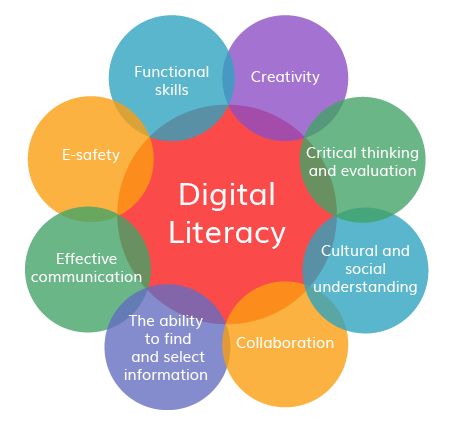Digital Literacy
Jan 31, 2019 • 65 views
The term literacy is a very common one, it simply means the ability to read and write. But when we add the word ‘Digital’ before it, it becomes a dynamic term which includes a lot of aspects and not simply reading and writing.
According to Cornell University, digital literacy may be defined as “the ability to find, evaluate, utilize, share, and create content using information technologies and the Internet.”Digital literacy is more than just knowing how to use digital tools, it involves the ability to locate, organize, understand, evaluate and analyze information using digital technology. The basic principles of reading and writing remain the same, but with the ever evolving technology, the dynamics of digital literacy keep changing. It involves a number of activities such as reading from digital sources, watching videos, and then creating new content such as articles, making videos, images, etc to further convey this knowledge.

Over the last few years, our world has become increasingly digitalized and this in turn requires us to also become digitally literate to be successful in this digitalized environment. In today’s world, it is a fundamental requirement to be digitally literate in order to progress in every field of life such as studies, jobs, or searching for jobs. Almost everything we do today requires us to be digitally literate. From surfing the internet, to searching for jobs and then performing well in those jobs, everything requires us to be digitally literate.
Digital literacy overlaps with computer literacy. But it is a much more expansive term than computer literacy as it involves various digital media for learning like mobile phones, I pads, tablets, etc and not just personal computers.

Digital learning gives an entirely different user experience as compared to traditional learning. In traditional learning we can only read simply without any sort of change and almost every person has the same user experience. In contrast, in case of digital learning, the articles, videos and other content have various hyperlinks and images in addition to the basic text that the content creator has offered. Users can click on theselinks or images at any point he or she wants and can decide how far he or she wants to deviate from the initial text offered to them. As such, every user gets a different experience as different users can click on these links at different points of timeand can decide for themselves how far they stray from the original text. Various newspapers and magazines have also introduced their digital forms keeping in mind the growing trend of digital literacy. They add various images and links in their articles to enable an enhanced user experience. In addition digital literacy also allows us to search for a particular article without having to scan through the entire newspaper or magazine.
Today, due to this increasing importance of digital literacy, various colleges and universities are also focusing on it and are trying to increasingly digitalize their system. Due to this various universities have launched their online certification courses. In order to successfully go through these courses, one needs to be digitally literate. A large portion of the success of students in these programs can be attributed to them being digitally literate. If one does not have a certain level of digital literacy, succeeding in a digital environment is next to impossible.
